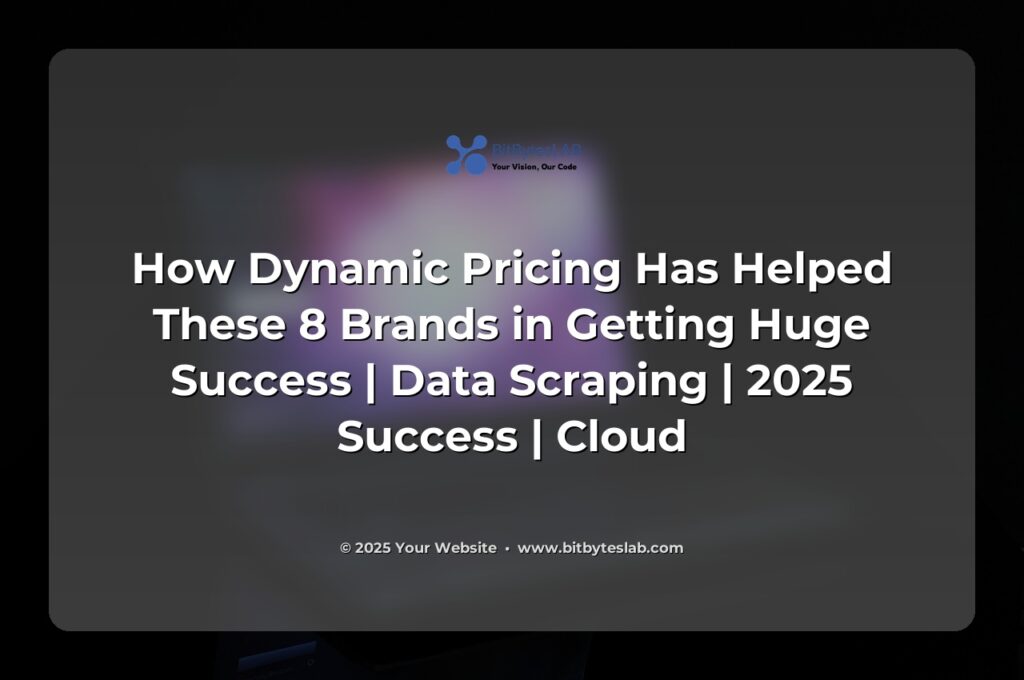How Dynamic Pricing Has Helped These 8 Brands in 2025 to Scale Big (and Why You Should Care)
Picture this: It’s 2025, your competitors just launched a new promo, weather’s turning the sales figures upside‑down, and you’re staring at a dashboard that reads “Set the price, now!” Dynamic pricing isn’t just a buzzword; it’s the secret sauce that’s turning ordinary product catalogs into revenue‑generating engines. In this post, I’ll walk you through the why, the how, and the insane ROI that eight industry leaders have reaped by mastering real‑time price adjustments.
What Keeps Businesses Stuck in the Past?
Many brands still cling to static price tags, hoping a single “seasonal discount” will do the trick. The result? Missed margins, stale inventory, and a churn curve that’s louder than a rock concert. The root of the problem is a siloed view of data—sales, inventory, competitor moves, weather—all living in separate silos and updated only once a week. In 2025, the real game‑changer is a unified data pipeline that runs faster than you can say “price elasticity.”
Core Concepts That Drive Smart Prices
- Dynamic Pricing: Adjusting price tags in real‑time based on demand signals. 🎯
- Pricing Models: From cost‑plus to AI‑driven, each model demands different data and has a unique risk profile.
- Data Sources: Competitor feeds, inventory systems, historical sales, and even weather APIs. Good data = great prices.
- Elasticity & Conversion: Predicting how a price tweak will influence volume—key to balancing revenue vs. margin.
- Latency & Throughput: In rideshare and airline markets, you need sub‑second updates. 🚀
- Legal & Ethics: GDPR, CCPA, and price‑fixing warnings are real‑world hurdles you can’t ignore.
Keep in mind, the quality of the data you feed in is as crucial as the algorithmic sophistication. A model that learns from stale or biased data will only churn out prices that hurt more than they help.
🔧 Why do Java developers wear glasses? Because they can’t C# 👓

Expert Strategies: Turning Data Into Dollars
Here’s the playbook that most brands slip up on: they treat data like a static spreadsheet instead of a live feed. The winning teams build a production‑grade pipeline that feeds fresh price signals into their e‑commerce layer every minute.
- Multi‑source Scraping & APIs: Combine competitor scrapers with inventory and weather APIs for a holistic view.
- Feature Engineering on Steroids: Compute price spreads, time‑of‑day effects, lagged demand patterns.
- Model Training & Drift Monitoring: Use gradient boosters for baseline revenue optimization, then layer reinforcement learning for high‑frequency markets.
- Rule Engine & Human‑in‑Loop: Add business constraints—floor prices, inventory caps, or regulatory guardrails—before publishing.
- Deployment at Scale: Dockerize services, orchestrate with Kubernetes, and run price refresh jobs on serverless compute for cost efficiency.
- Monitoring & Feedback Loops: Dashboards that track revenue per visitor, margin changes, and conversion swings in real‑time.
By integrating all these components, brands can push dynamic price changes to their storefronts a full 10× faster than a manual workflow would allow, and in doing so, capture high‑margin opportunities before competitors even notice.
⚡ A SQL query goes into a bar, walks up to two tables and asks… ‘Can I join you?’ 🍺

Industry Insights: 2025 Market Pulse
Dynamic pricing isn’t just an applied science; it’s an emerging industry trend. In 2025, AI‑driven reinforcement learning solutions are now mainstream for high‑frequency sectors such as rideshare and airline. Meanwhile, B2C e‑commerce players are turning to personalized contextual pricing, offering customers slightly different rates based on device, location, and purchasing history—an approach that boosts conversion by 7–12 % on average.
- Edge Pricing: Decisions are made on IoT devices in retail stores, reducing latency to milliseconds.
- Explainable AI: Regulatory bodies now demand a clear “why” for every price change, so brands are building models that output human‑readable rationales.
- Blockchain & Smart Contracts: B2B sectors use immutable price agreements, ensuring transparency across supply chains.
Statistically, companies that adopt dynamic pricing see revenue uplift ranging from 5–15 % and inventory turnover improvements of 10–20 %—numbers that are not just cool to hear but game‑changing for your bottom line.
Business Applications & ROI: Real Numbers That Matter
Take Walmart’s “Live Markdown” initiative as an example. By scraping competitor prices in real‑time and feeding them into a predictive engine, Walmart reduced markdown frequency by 18 % while maintaining customer trust. The result? A 3 % lift in gross margin across the grocery category.
For a travel giant like Expedia, integrating weather and local event data into pricing models increased booking conversion by 9.5 % during peak season, translating into $200 M+ incremental revenue in Q3 alone.
These stories underline a common theme: the fine line between marginal gains and exponential growth is data timing. When your pricing engine reacts in seconds, competitors lag behind for days or weeks.
Common Pitfalls & How to Dodge Them
- Anti‑Scraping Roadblocks: Cloudflare towers and CAPTCHAs can throttle your crawler. Remedy: rotate residential proxies and use human‑like interaction patterns.
- Model Drift: Market turbulence (think pandemics or geopolitical shocks) can render old training data useless. Remedy: nightly retraining and drift alerts via KL divergence.
- Latency Bottlenecks: Slow API calls to push prices back into the storefront kill revenue. Remedy: batch updates and asynchronous queueing.
- Legal Grey Zones: Price‑fixing concerns arise when you mirror competitors too closely. Remedy: set a minimum price spread and audit logs.
- Inventory Conflicts: A high price on a low‑stock SKU might push customers elsewhere. Remedy: inventory‑aware features and floor pricing thresholds.
By proactively addressing these issues, you can maintain a healthy pipeline that delivers fresh, compliant, and profitable price signals.
Future Horizons: What’s Next for Dynamic Pricing?
Look ahead and the horizon expands: quantum‑computing‑enabled optimization could process millions of price permutations in microseconds. Privacy‑preserving federated learning will let brands collaborate on price models without exposing raw data. And cross‑channel orchestration will keep your web, mobile, marketplace, and in‑store prices perfectly in sync.
Staying ahead of these waves means investing not just in technology, but in the people who can interpret data, build ethical models, and keep the system agile.
Ready to Price Like a Pro?
Dynamic pricing isn’t a luxury—it’s the new survival skill for brands that want to stay profitable in a world where every second counts. By crafting a data‑driven, real‑time pipeline, adopting AI‑powered models, and building robust monitoring, you can unlock revenue streams that were previously hidden beneath static price tags.
And if you’re feeling a bit “scraper‑strapped” or just want a partner who lives and breathes data extraction, BitBytesLab is your go‑to provider. With a team of seasoned scraping experts, we turn raw web data into actionable insights—and help you implement dynamic pricing strategies that actually work.

